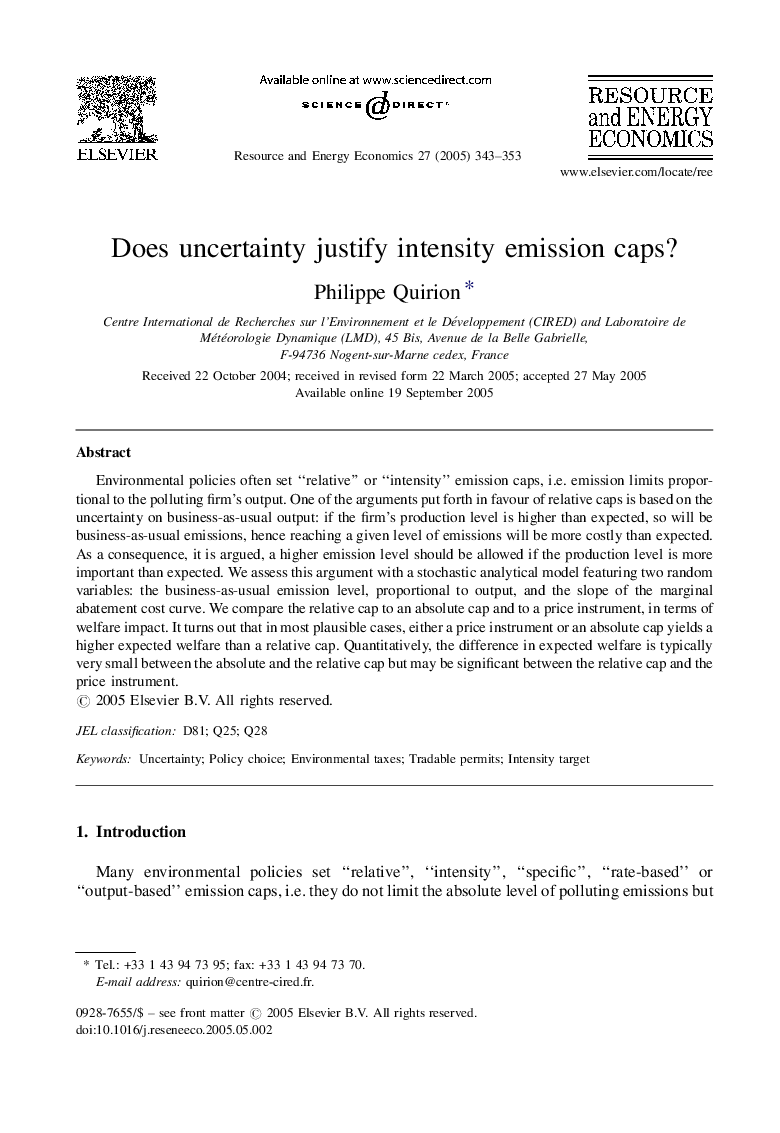| Article ID | Journal | Published Year | Pages | File Type |
|---|---|---|---|---|
| 10483882 | Resource and Energy Economics | 2005 | 11 Pages |
Abstract
Environmental policies often set “relative” or “intensity” emission caps, i.e. emission limits proportional to the polluting firm's output. One of the arguments put forth in favour of relative caps is based on the uncertainty on business-as-usual output: if the firm's production level is higher than expected, so will be business-as-usual emissions, hence reaching a given level of emissions will be more costly than expected. As a consequence, it is argued, a higher emission level should be allowed if the production level is more important than expected. We assess this argument with a stochastic analytical model featuring two random variables: the business-as-usual emission level, proportional to output, and the slope of the marginal abatement cost curve. We compare the relative cap to an absolute cap and to a price instrument, in terms of welfare impact. It turns out that in most plausible cases, either a price instrument or an absolute cap yields a higher expected welfare than a relative cap. Quantitatively, the difference in expected welfare is typically very small between the absolute and the relative cap but may be significant between the relative cap and the price instrument.
Related Topics
Physical Sciences and Engineering
Energy
Energy (General)
Authors
Philippe Quirion,
